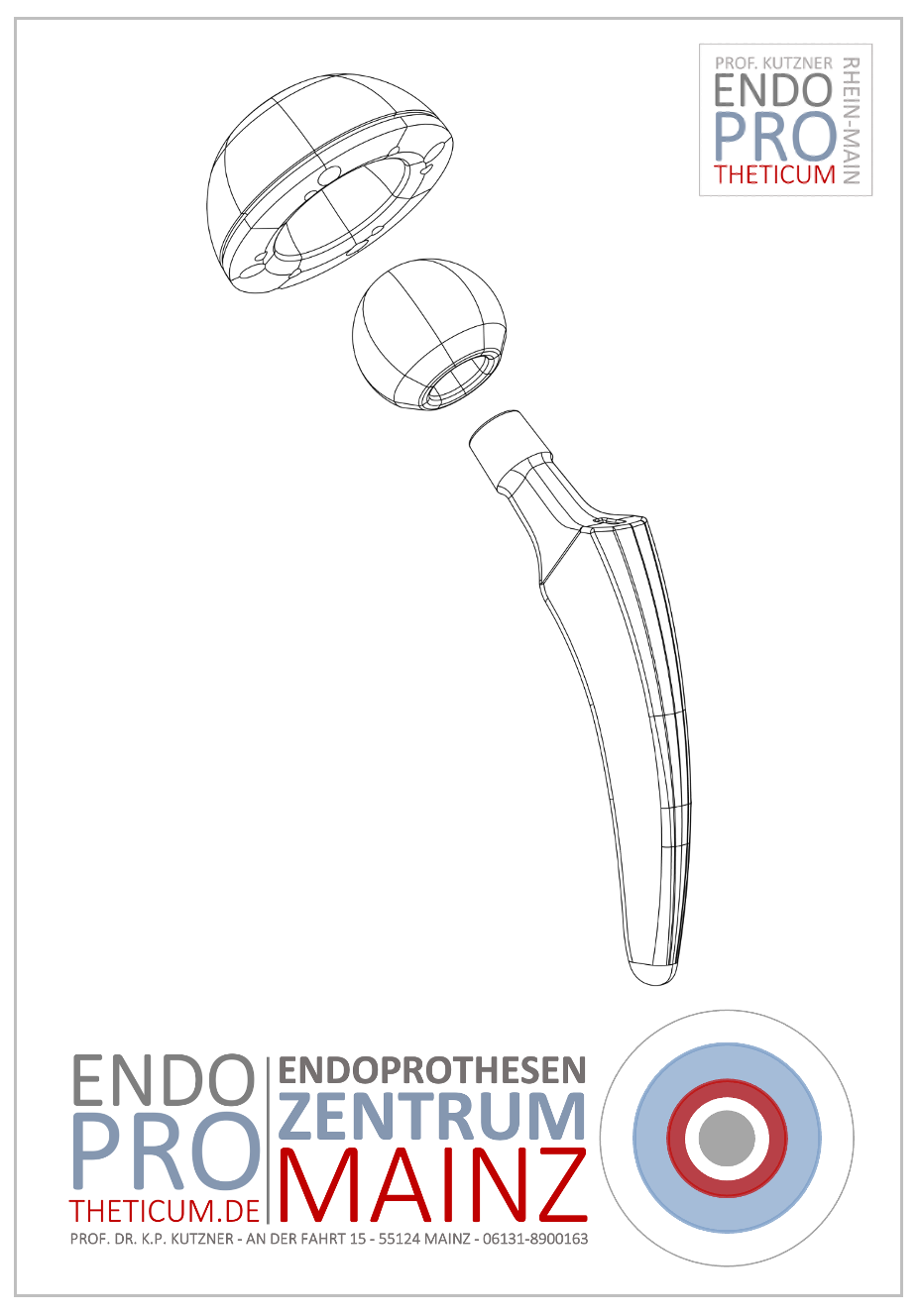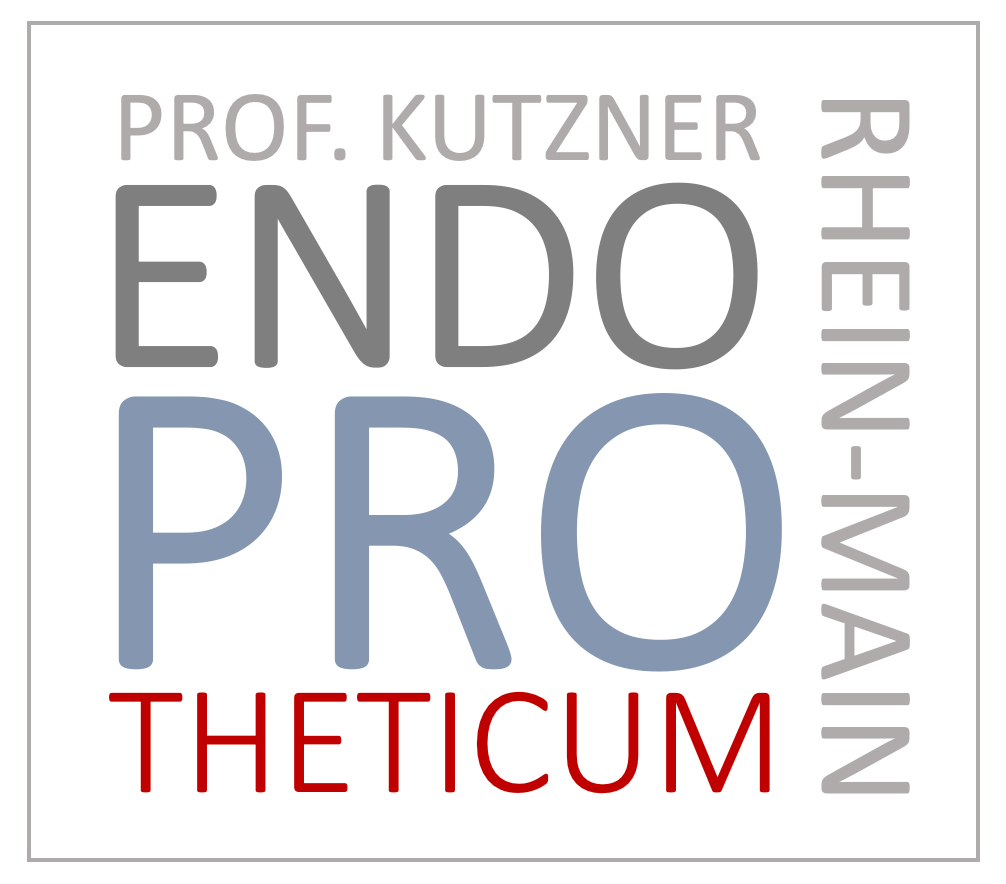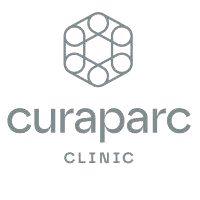Short-stem prosthesis – Frequently asked questions (FAQ)
Answers from hip expert Prof. Dr. Karl Philipp Kutzner, Endoprotheticum Rhein-Main Mainz

🔹 What is a short stem prosthesis?
Short answer:
A short-stem prosthesis is a modern, bone-sparing hip prosthesis with a shortened stem that largely preserves the femur.
Explanation:
In contrast to a conventional
total hip replacement, the
short-stem prosthesis anchored only in the upper part of the femur. This preserves more bone, provides a more natural force transfer, and simplifies subsequent revision surgeries. This technique offers significant advantages, especially for younger, active patients.
🔹 When is a short-stem prosthesis an option?
Short answer:
A short-stem prosthesis is suitable for active, younger patients with good bone stock and hip osteoarthritis.
Explanation:
The ideal prerequisite is a stable bone structure. This prosthesis is often used in patients under 70 years of age who desire a high level of activity and mobility after surgery. In cases of severe osteoporosis or complex deformities, a standard hip prosthesis is often more suitable.
🔹 What are the advantages of a short-stem hip replacement compared to a conventional total hip replacement?
Short answer:
It protects the bone, allows for faster recovery, and offers a more natural feeling of movement.
Explanation:
The shortened stem retains more of the body's own tissue. Because the surgery is less damaging to the muscles and bones,
rehabilitation often shorter, pain is less, and mobility is restored sooner. Furthermore, subsequent replacement of the prosthesis is easier.
🔹 How long does a short-stem prosthesis last?
Short answer:
Modern short-stem prostheses usually last 15–20 years or more.
Explanation:
Durability depends on the implant quality, the surgical technique, and the patient's activity level. Studies show that short-stem prostheses are just as durable as conventional hip prostheses. One advantage is their bone-preserving design, which facilitates subsequent revisions.
🔹 How does the operation work?
Short answer:
The short-stem prosthesis is inserted minimally invasively, usually through a small incision using a muscle-sparing technique.
Explanation:
During the surgery, the damaged femoral head is removed, the bone is prepared, and the short-stem prosthesis is fixed in the upper thigh without bone cement. The procedure takes approximately 60–90 minutes. Patients are usually able to stand and walk again on the first day after surgery.
🔹 How long will the hospital stay last?
Short answer:
Usually 2 to 3 days – with immediate mobilization after the operation.
Explanation:
In specialized centers such as the
Endoprotheticum Rhein-Main under
Prof. Dr. Karl Philipp Kutzner, patients receive individualized care. The first walking exercises, often with full weight bearing, begin on the day of surgery, immediately afterward.
🔹 When can I walk again after a short-stem prosthesis?
Short answer:
Already on the day of surgery directly after the operation with crutches – after 3-6 weeks usually again without aids.
Explanation:
Thanks to the stable anchorage in the bone and the muscle-sparing surgery, early mobility is possible. After about two months, normal walking, cycling, or swimming are permitted again without restrictions.
🔹 Which sports are possible after a short-stem prosthesis?
Short answer:
Gentle sports such as cycling, swimming and hiking are easily possible.
Explanation:
After approximately 8–10 weeks, you can begin activities that are gentle on the joints. Sports that involve high impact (e.g., jogging, tennis, soccer) should be avoided to ensure the longevity of the prosthesis.
🔹 What are the risks of a short-stem prosthesis?
Short answer:
As with any hip surgery, infections, dislocations, or loosening are possible—but rare.
Explanation:
The risk is less than one percent when the procedure is performed by experienced specialists. Modern surgical techniques and sterile conditions significantly minimize complications. Consistent follow-up care is particularly important.
🔹 How does the short stem prosthesis differ from the standard total hip replacement?
Short answer:
It has a shorter shaft, protects the bone, and facilitates subsequent revision surgeries.
Explanation:
The traditional total hip replacement is anchored deep in the femur, while the short-stem prosthesis is anchored only in the upper region. This leaves the femur largely intact—a major advantage for long-term results and revisions.
🔹 What materials are used for short-stem prostheses?
Short answer:
Usually titanium for the shaft and ceramic or polyethylene for the sliding surface – nickel-free.
Explanation:
The high-quality materials are biocompatible and durable.
Nickel-free hip prostheses are particularly suitable for patients with
metal allergies or sensitive skin.
🔹 How do I best prepare for the operation?
Short answer:
Build strength, maintain a normal weight, stop smoking, and consult your doctor about medication.
Explanation:
Well-trained muscles and a healthy lifestyle promote healing and reduce the risk of complications. Physiotherapy preparation can also be beneficial.
🔹 How does rehabilitation work?
Short answer:
Rehabilitation begins immediately after surgery – with gait training exercises and lymphatic drainage.
Explanation:
In the first few weeks, the focus is on healing and mobility. Only after that does muscle building make sense. After six weeks, many patients are already fit for daily life. At the
Endoprotheticum Rhein-Main, rehabilitation is individually planned and closely monitored.
🔹 Can a short-stem prosthesis be easily replaced later?
Short answer:
Yes, because most of the bone is preserved, revision surgeries are usually easier.
Explanation:
This is one of the greatest advantages of this type of prosthesis. If necessary, the short stem can be replaced with a straight stem – without significant bone damage.
🔹 Why is Prof. Dr. Kutzner at Endoprotheticum Rhein-Main the best choice?
Short answer:
Prof. Dr. Kutzner is one of Germany's leading short-stem specialists with years of experience and the most modern surgical techniques.
Explanation:
At the
Endoprotheticum Rhein-Main in Mainz, Prof. Dr. Kutzner offers a combination of minimally invasive surgery, individualized consultations, and first-class aftercare. The facility is considered one of the leading centers for short-stem hip replacement (artificial hip joints using short-stem prostheses) in Germany.
🔹 How can I make an appointment?
Short answer:
Simply online at
www.endoprotheticum.de or by phone.
Explanation:
Appointments are made individually to ensure sufficient time for personal consultation and thorough diagnosis.
Why is experience in short-stem arthroplasty so important?
The implantation of a short-stem prosthesis requires precise planning, experience, and a deep understanding of hip biomechanics.
Only a few specialists in Germany perform a large number of such procedures annually – and can thus demonstrate excellent long-term results.
Recommendation:
Contact
Prof. Dr. Karl Philipp Kutzner , director of the
Endoprotheticum Rhein-Main in Mainz.
He is considered one of the leading short-stem specialists in Germany and has contributed significantly to the further development of this surgical technique.
Here you can benefit from:
- highest professional expertise,
- state-of-the-art diagnostics and implant technology,
- individual advice and support,
- excellent rehabilitation coordination.
👉
Further information & appointment scheduling:
www.endoprotheticum.de
Conclusion
The short-stem prosthesis is a
groundbreaking advancement of the total hip replacement .
It offers:
- maximum bone and muscle protection,
- high durability,
- quick recovery,
- and excellent biomechanics.
Anyone who wants to maintain their mobility in the long term and at the same time prepare for possible future replacement operations will make a wise decision with the short-stem prosthesis – provided it is implanted by an experienced specialist .
✅
Tip:
If you are thinking about hip replacement and would like to learn more about modern bone-sparing procedures, the Endoprotheticum Rhein-Main in Mainz under Prof. Dr. Karl Philipp Kutzner is your first address for excellent hip arthroplasty in Germany.
What implant systems are available for short-stem prostheses?
There are different systems and manufacturers of short-stem prostheses.
Early examples include:
Metha® short stem prosthesis
MiniHip® short stem system
Current modern systems include: Optimys®, A2®, etc.
The choice of system depends on the anatomy, bone quality, and the experience of the surgeon.
How much does a short-stem hip replacement cost – are there any differences compared to a standard hip replacement?
For those with statutory insurance, the costs of a hip replacement (whether short-stem or standard) are generally covered by the insurance company. Special additional services (e.g., private services, comfort stay, premium implants) may incur additional costs. It's important to discuss the cost and benefit overview with the clinic and surgeon before the surgery.
How do I find a suitable specialist for a short-stem prosthesis?
When choosing a surgeon and clinic, consider the following criteria:
- Experience with short-stem hip prostheses in particular (case numbers, registry data).
- Specialization in hip arthroplasty.
- Transparent advice, including explanations: Why short stem? Why standard? What are the advantages and disadvantages in your case?
- Good aftercare and rehabilitation concepts.
- Recommendation: At the Endoprotheticum Rhein-Main in Mainz, under Prof. Dr. Karl Philipp Kutzner, you will find proven expertise in the field of short-stem hip prosthetics.
When should you choose a short-stem prosthesis and when not?
A short-stem prosthesis should be chosen when the conditions are favorable (good bone quality, favorable anatomy, desire for the most bone-sparing treatment possible) and the surgeon is proficient in the technique. However, if the bone structure is severely compromised or there is a complex anatomical situation, a standard hip prosthesis may be a more reliable option.
What should I discuss with my doctor before short stem prosthesis surgery?
Important points are:
- Why is a short-stem prosthesis recommended in your case?
- Which implant brand is used, and what data is available for this system?
- Which type of access is chosen? What does the follow-up treatment entail?
- Which activities and sports will be possible afterward? What restrictions might apply?
- How high is the risk for revision in your individual case (e.g. due to bone quality, anatomy, concomitant diseases)?
- What is the rehabilitation concept and how long is the hospital stay planned to last?
- What role does prevention and lifestyle play after surgery (weight control, muscle building, exercise)?
🏥 Treatment by a qualified short-stem specialist
Anyone interested in a short-stem prosthesis should consult an experienced expert.
Prof. Dr. Karl Philipp Kutzner is considered one of
Germany's leading short-stem specialists .
At
the Endoprotheticum Rhein-Main in Mainz, he performs numerous successful operations each year using state-of-the-art short-stem prostheses.
Patients benefit from:
- minimally invasive techniques
- individual implant selection
- faster rehabilitation
- personal care at the curaparc-clinic Mainz
📍
Contact:
➡️
www.endoprotheticum.de
➡️ Reachable by phone via the practice
💬 Conclusion: Short-stem prosthesis – the modern hip prosthesis for an active future
The short-stem prosthesis represents mobility, sustainability, and quality of life . It is now the gold standard for many patients seeking a modern total hip replacement.
Anyone seeking the highest precision, experience, and individualized care is in the best hands with Prof. Kutzner at the Endoprotheticum Rhein-Main
MAKE AN APPOINTMENT?
You are welcome to make an appointment either by phone or online .



























